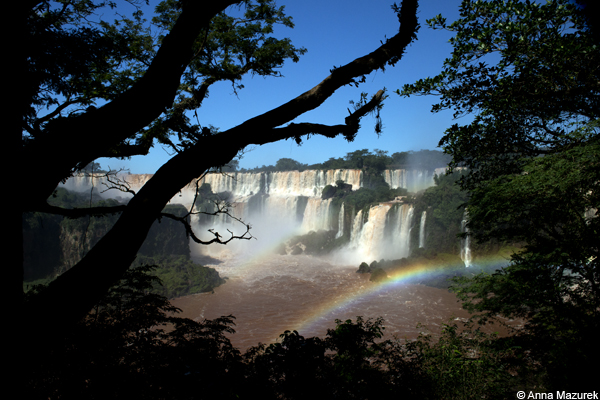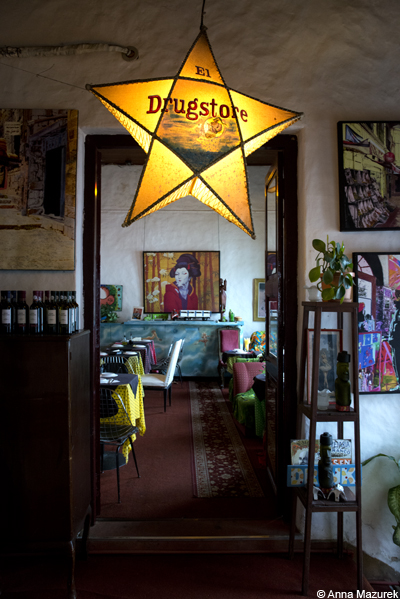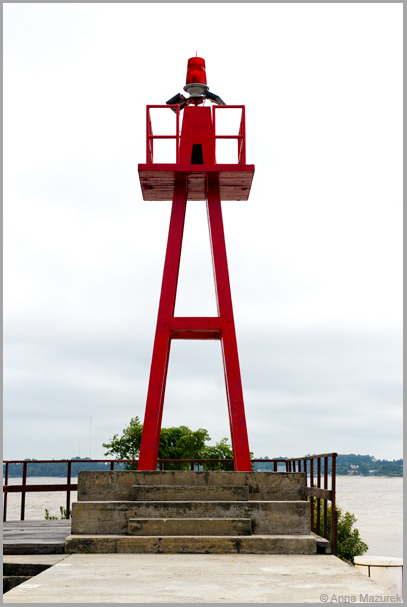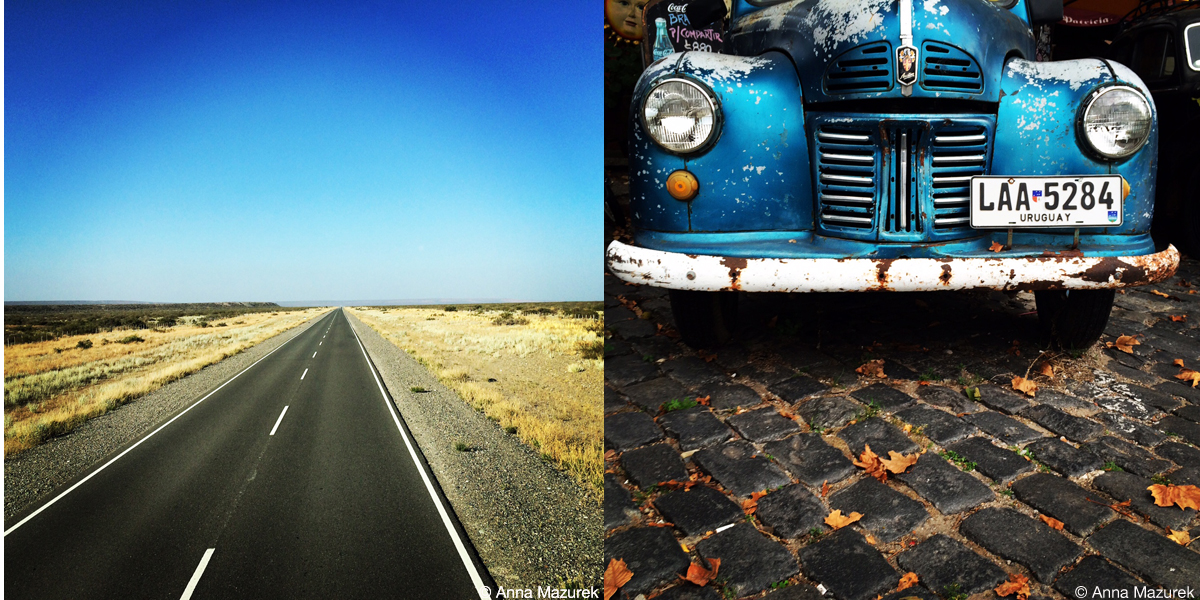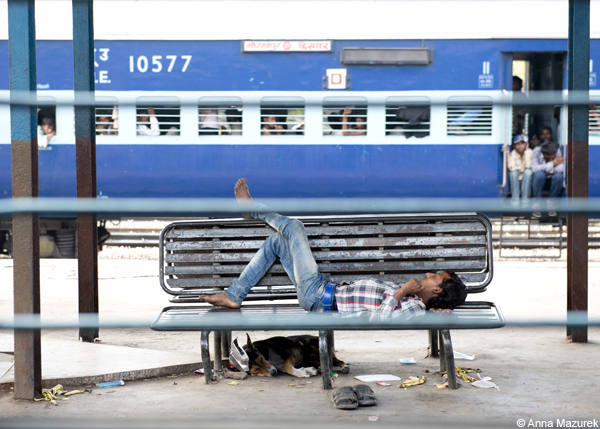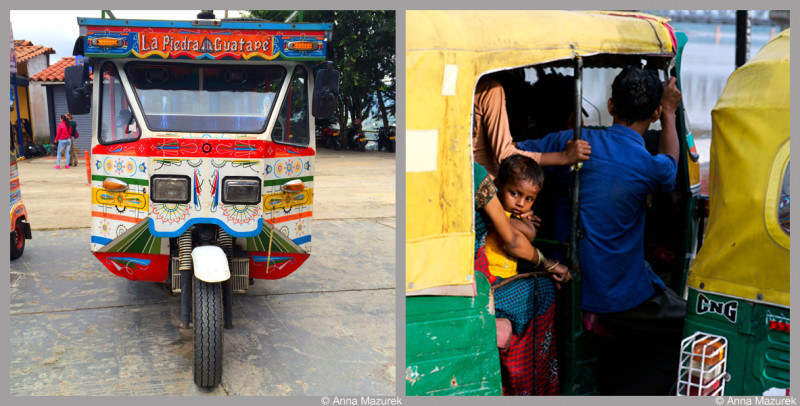
Guide to Iguazu Falls, Argentina
I checked Iguazu Falls off my bucket list last week.
Here’s a few photos and tips about visiting from Argentina:
Tips for Visiting Iguazu Falls in Argentina
Catch the first bus. The park opens at 8 a.m. daily. Catch the 7:15 a.m. bus ($100 peso return) from Puerto Iguazu to be one of the first people in the park. Start with the Upper Circuit Trail – you’ll have it all to yourself! Then, walk the Lower Circuit Trail afterwards. Photo tip: Wait until after 12 p.m. to visit the Devil’s Throat viewpoint. The light is best in the afternoon.
Get your ticket stamped. Admission is reduced by 50% if you visit a second day, but you must get your ticket stamped before you leave the park. Iguazu Falls (Parque Nacional Igauzu) admission is currently 240 pesos as of March 2015.
Pack a lunch. Food in the park is expensive. Grab a pre-made sandwich for a couple dollars at a bakery in Puerto Iguazu. The best bakery is on Avenue Guarani near the corner of the intersection with Cordoba.
Watch the heat. Bring sunscreen, extra water and an umbrella for the sun. It’ll save your skin!
Bring your passport. There is a bus from Puerto Iguazu bus terminal that goes to Brazil side of the park. If water levels are high, mist will severely limit visibility. American’s don’t need a visa to visit for the day.

A Photo Guide to Colonia, Uruguay
Colonia is a photographer’s dream – quiet cobblestone streets, rusting classic cars and colorful, crumbling colonial buildings. The former Portuguese settlement and Unesco World Heritage site is 50 km from Buenos Aires by ferry. The town’s location made it a haven for smugglers and was later succeeded to Spain in the 1700s. Frequent ferries make it a popular day trip from Buenos Aires because the ATMs allow withdrawals in USD, which is heavily coveted in Argentina due to high inflation. The standard rate is 8.78 pesos while the current blue dollar rate for the black market is 12.8 pesos per dollar.
How to get to Colonia, Uruguay from Buenos Aires
Logistics: Frequent ferries operated by Colonia Express, Seacat and Buquebus take a little less than two hours from Buenos Aires. The later also offers slower boats. Prices are cheaper in advance. Some operaters require you to book online, but don’t be fooled by the cheap fares. The main expense are the taxes added at checkout. I booked online a week in advance and paid $500 pesos roundtrip. I met other travelers who paid $700-$1000 pesos last minute at the ferry office in Buenos Aires. Prices valid for March 2015. Tips:
- Beware of ATM limits. ATMs allow withdrawals of USD in $300 increments and charge $6 USD/transaction. (To avoid ATM fees, refer to Travel Banking 101.) Your bank might block your card here because it’s a high fraud area. My card got blocked twice in three days.
- Pay with a VISA credit card to avoid paying tax. The VAT is not included on foreign credit card purchases in restaurants until July 31, 2015. This saved me roughly 18%. Refer here for official information.
- Eat at Buen Suspiro. This cozy restaurant on Calle de los Suspiros has the best food in Colonia. They specialize in picadas, large shared appetizer plates. They take VISA credit cards so take advantage of the VAT discount!
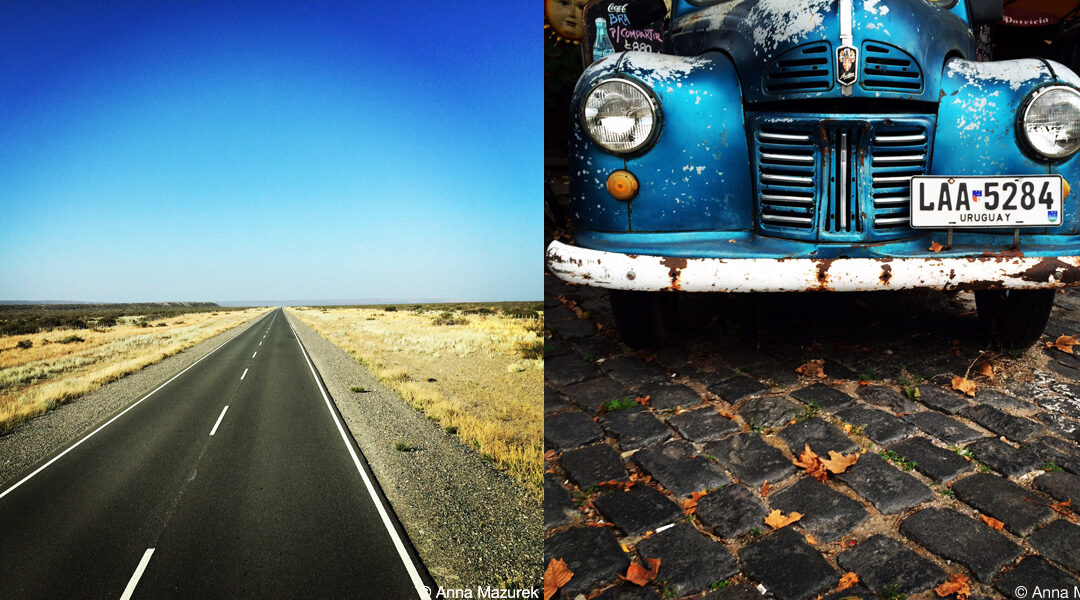
Eliminate Your Bills
A Guide to Eliminating Monthly Bills
In my post about Saving for Travel, I mentioned eliminating bills. If you are traveling long-term, you should have almost NO bills. That’s right NONE. Refer back to your list of monthly bills. Cut off all monthly/annual subscriptions: Pandora, Hulu, Amazon Prime, etc. Then, follow the steps below to make your main bills disappear.
Rent/Mortgage
Sublease/Rent out your place. Sell your house and excess stuff. Ask your parents or a friend if you can store what’s left in their garage. Offer to pay a small fee or buy them a wool carpet from India. (Luckily, my parent’s own a furniture store with plenty of storage. The few things I own get stored in a corner or the closet in my old room.) Airbnb is a great option to make money while you travel. You can pay a percentage to a friend/family member to manage/clean the place while you are gone.
Car/Truck/Motorcycle
Option 1: Sell it.
Option 2: Rent it.
If selling scares you, rent your vehicle out to a friend/cousin/your dry cleaner’s dog walker. We all know someone who needs a car or has one that only cranks if you kick it ten times. If you own your vehicle, consider letting a friend drive it for free if they pay your car insurance.
Or rent out your car with companies like Relay Rides or Flight Car.
Car Insurance
If you don’t want to sell or rent your car, here’s a few ways to slash your insurance bill:
Drop Liability Coverage. If your car will be parked while you travel, you can cut your bill in half by dropping liability and leave only the comprehensive coverage. You will have return the license plate, but your car is protected if a tree falls on it or a herd of cows have a dance party on the roof.
Risks: Be sure to change your oil when you return. You might also need a new battery. You’ll will also have to get the tags for your car again. I know it’s common sense, but I have to say it: NOBODY should drive your car without liability insurance. If you don’t have comprehensive insurance or your car is ancient, then ditch the insurance until you return. Talk to your insurance agent about your options before making a decision.
USAA Insurance offers huge discounts for cars in storage. (Available only to US military members and their families.)
Is this financially worth all the hassle? Do the math. How long can you travel on the money you save?
Cell Phone
Cut off or suspend your cell phone service. Here’s a list of service/billing suspension options for major U.S. carriers:
- Verizon allows you to suspend your service online at no cost for six months per year in three-month increments. (I do this every year simply because my cell phone number is the only consistent thing in my life.)
- AT&T lets you suspend service but continues billing.
- Sprint offers a Seasonal Standby Plan to suspend service for $8.99/month for six months per year for all plans.
- TMobile offers free international data and messaging for their Simple Choice plans. This is a reason to consider keeping your plan instead of suspending it.
Other Tips:
- If you cut off your service completely, you will lose your phone number.
- Do NOT get an international plans. The rates are crazy: $2/minute for voice and .50/text. It’s cheaper to use Skype or buy a local SIM to use for both local/international calls.
- Research early termination fees. It could be cheaper than paying your bill while you are traveling.

The secret to staying healthy while traveling is eating healthy and exercising. And, invest in a good travel insurance plan.
Health Insurance
Ditch your U.S. health insurance and get a good travel medical insurance plan. Most U.S. health insurance companies offer limited coverage abroad except for major emergencies, which require paying out of pocket upfront and being partially reimbursed. If you have a serious preexisting condition, research your options thoroughly. Some travel insurance policies will cover a “Sudden and Unexpected Reoccurrence of a Preexisting Condition.”
If you have health insurance through your employer:
When you quit a job in America, you receive an option to enroll in the COBRA program, which allows you to keep your same benefits but at a higher cost for up to 18-36 months. COBRA gives you 60 days to sign up, and coverage is retroactive to the date you quit. This gives you two months to start your trip and still have the safety net of COBRA eligiblity as a backup plan if you have a medical emergency. Plus, it saves the cost of paying for COBRA insurance.
Here’s what I do: I researched the cost of COBRA before quitting my job and the cost of Obama Care. I had to decide if the risk of getting sick or having a major accident was worth the cost of COBRA or Obama Care. This year, I took a risk and didn’t sign up for either but made sure I left for my trip BEFORE my 60-days to sign up for COBRA ended. If I had a medical emergency, I would have signed up for COBRA and been covered retroactively by the benefits of my previous insurance.
Prescriptions
If you take prescriptions regularly, research generic costs without insurance. Also, remember most drugs are available at a significant discount without a prescription in many places abroad especially Asia. (I occasionally use prescription eye drops. A tiny bottle costs $30 with insurance and $300 without. In Thailand, the exact same brand and batch is $7! It’s cheaper to live abroad than in America sometimes.)
TIP: Most insurance plans also offer a 90-day vacation supply of medications for travel on top of your regular monthly or 90-day supply refills. Simply call your insurance to clarify the details and start the process at least a month before your trip.
Before canceling your health insurance:
- Research international coverage options for your current plan
- If you have insurance from your employer, verify COBRA eligibility. Do a cost comparison of COBRA and Obama Care BEFORE you quit.
- Research travel insurance coverage thoroughly. Daredevils should add the adventure sports rider. My current plan is $50/month with the adventure rider and end of trip home coverage. (Travel Insurance Guide Coming Soon!)
- Non-emergency medical care and even x-rays can be significantly cheaper abroad. I paid $72 for two x-rays and an appointment with an orthopedic doctor at the nicest and most expensive hospital in Bangkok. (I was reimbursed by my travel insurance later.) I also got my teeth cleaned for $30 in Bangkok.
How do you eliminate bills while you travel? Share in the comments!
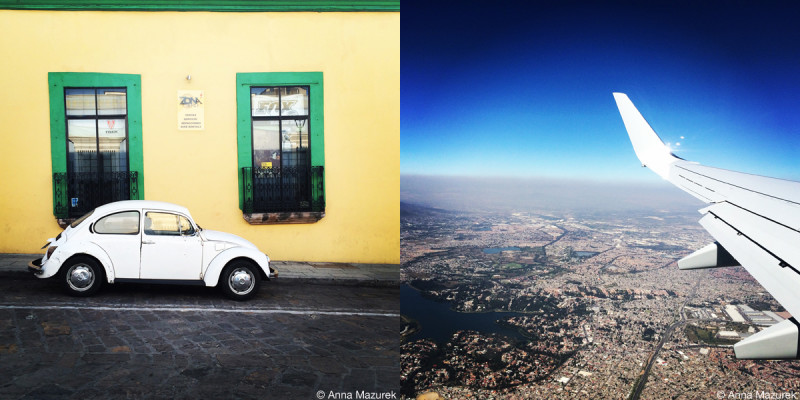
How to Cut Costs on Transport
Use Public Transport
Most large cities have efficient and affordable large-scale train or bus networks connecting the airport with the city center. (Even Delhi has a great air-conditioned metro train system.) Take a local bus instead of a taxi to the bus/train station or airport for 1/10 of the price. Daily and weekly passes are a good deal if you travel frequently. (ALWAYS get the 7-day pass in NYC.)
Many parts of the world have a system of pickup trucks with seats in the back that have routes just like buses. They will drop you anywhere for next to nothing. In Thailand, they are called songthaews. Take advantage of them!
Night Buses/Trains
Night buses/trains are my favorite form of transport. For long journeys, both help save time and accommodation costs. Most overnight trains include options for beds. The sleeper trains in Thailand, Spain and India are pretty comfy and affordable. Plus, you don’t waste a day traveling. Aside from specific areas of Central and South America, night transportation is extremely safe.
Rail Passes
England, mainland Europe, Australia and Japan have great rail pass options for travelers and students. Check prices of individual tickets to see if it’s worth it for your planned route. Plan in advance because most rail passes have to be purchased BEFORE you leave your home country. Students receive a significant discount on passes so take advantage!
Local Buses
VIP Tourist buses are an overpriced scam with blaring TVs and are often a target for thieves. Most countries have cheaper, comfy local buses for half the price. In Thailand, I always take second-class buses for half the cost. They still include large comfy seats, air conditioning, a bathroom and a free bottle of water/meal. There are even cheaper open-air “chicken” buses. These can be rough for long trips but are great for short day trips. These are completely safe in Southeast Asia, but women traveling alone should be cautious in other parts of the world.
Taxis & Tuk Tuks
Agree on a price in advance or ask to use the meter. Ask locals the fair/standard price for your route beforehand then negotiate accordingly.
Compare costs. Tuk tuks are a great deal in India but outrageous in Thailand. A metered air-conditioned taxi will be a ¼ of the cost in Bangkok. Taxi fares increase during rush hour, late at night and for airport routes. Drivers might also charge exorbitant flat rates on weekends and near tourist spots. Sometimes it’s best to negotiate a taxi to the nearest public transport station instead of your final destination then take a train/bus.
Research reputable taxi companies in countries with safety concerns. In India, I only use Meru or a private taxi provided by my hotel. In Bogota, I use the Tappsi app for safe taxis.
Flights
– Research local budget airlines. They don’t always show up in big travel search engines. (I find Kayak and Skyscanner are the best search engines with the best deals and airline options.) Book with the airline directly if possible. Some won’t accept foreign credit cards so book through sites like Cheaptrip.com for airlines like Indigo in India.
– Consider flying to the closest major city to your destination. Then, take public transport or a budget airline flight. I always bus/train combo to Southern Thailand from Bangkok to save flight costs.
– Check for luggage fees and pay them in advance. Some budget airlines increase luggage fees significantly on the day of the flight and charge heavily for overage. Print your boarding pass because some also charge if you don’t!
– If a city has several airports, consider transportation costs to the city from both airports. Budget airlines can fly into the smaller, domestic airports with less transport options.
– Be aware of arrival times. Is affordable/safe transport available at 3 a.m.? It’s better to sleep in the airport for a few hours and catch the first train into the city than fork out a fortune for a taxi in the middle of the night in a strange city. It also saves accommodation costs. Considering paying a little extra to fly in at a more reasonable time if transport is outrageous during the night.
– Keep track of your frequent flyer miles. Sign up for the FF mile programs for the major airlines in your country/area. Most major airlines are part of global alliances allowing you to earn miles on another carrier’s flight. I fly at least once a year on miles. (Don’t worry – I’ll post a guide to FF miles soon.)
– Government-owned airlines in third-world countries are notorious for being unreliable and can have sketchy safety records. Do your research. Foreign owned airlines are usually nicer, safe and more reliable. (Indigo is my favorite budget airline in India, and they fly to other parts of Asia as well. Interjet is the best in Mexico and Central America. Both are super nice!)
General Transportation Tips
1. Buy tickets in advance
Purchase tickets directly at the stations. Travel agencies and hostels add commission. Prices can also be significantly lower in advance. You also get first choice for seats, which is ideal if you are prone to motion sickness. (The front row on the right side usually has the most legroom.) When you arrive in a city at a station, consider buying your departure ticket before you leave the station.
2. Get it in Writing
If you change a ticket, ALWAYS do it in person and get it in writing. Always get a printed copy of any ticket. If you only get a receipt, be sure to have the contact info for the person you bought it from if an issue arrises.
3. Consider Transport Options
When deciding between different forms of transport, factor in the cost and difficulty of getting from the airport/station to your destination. Your arrival time will be the main factor. Consider the total cost of getting to your accommodation, not just the cost of getting to the city.
4. Ride Shares
Share rides with other travelers to airports/border crossings. Make friends and ask their final destination. Ask local travel agents for available ride shares and compare with taxi rates. Sometimes it’s a better deal and less hassle to go with a travel agent.
5. Skip Airport Taxi Surcharges
Grab a taxi at the departures hall in the airport to avoid paying the extra airport taxi fee at arrivals. The minute someone gets out of a taxi, I ask the driver if I can have a ride. (This worked well for me at Bangkok’s main airport (Suvarnabhumi) and saved a ton of time.)
6. Take a Boat
Ferries are totally reliable method of transport and a fraction of the cost of flying. I recently took a ferry from Panama to Colombia. There’s no land crossing between the two countries due to political unrest and jungle terrain. Flying from Panama City to Cartagena was close to $370 ONE-WAY for an hour flight. (This is ridiculous considering a friend flew one-way from San Francisco to Cartagena to meet me for less than $300!) The 18-hour ferry was $150 for a private cabin and $100 for a seat. (I did the cabin.) Considering I’m technically unemployed and living on my savings, I figured 18-hours of my time was worth saving the $200. Plus, I got a ton of work and reading done. And, I met some new amazing friends!
In coastal towns, water taxis and boats are the best and fastest option. Negotiation is key. Ask people at the port if they are going the same area to help reduce the cost for everyone.
7. Take Advantage of Free Ride Promos
Sign up for mobile taxi services with Uber and Lyft. Your first ride is free, and you get a free ride for each person you refer. Refer anyone traveling with you so you both benefit with all the free rides. You’d be surprised how many cities in the world use both services!
Do you have any tips for cutting costs on transport? Share them in the comments below!

How to Eat Well for Cheap

Left: Dragon fruit is cheap in street markets in Thailand. Right: Pumpkin soup at my favorite cafe in Laos – JOMA Bakery!
Food is my biggest expense. I will pay $4 for my accommodation and spend $15 on breakfast. I like to eat. Luckily, fresh, quality food can be significantly cheaper abroad because the produce is local and not shipped across the world.
Eat with the Locals
If a restaurant is full of foreigners, it’s not going to be cheap. Street food and local restaurants offer the best quality food at the cheapest prices. A meal at a street market in Thailand will only cost a couple dollars. You can get a street quesadilla for $1.50 in Mexico. Most local markets have a section of vendors serving prepared meals. Follow the crowds of locals. (Street food is pretty much safe. Be careful in India.) Ask your hostel or accommodation for suggestions of great places where they—not the tourists—eat.
Food Courts
All the big fancy malls in Bangkok have amazing food courts with delicious and cheap food stalls with dishes less than $2. Avoid the proper restaurants that surround the food court. Even ritzy Singapore has large hawker centers where you can get a meal for less than $5 and fresh juice for $1.50.
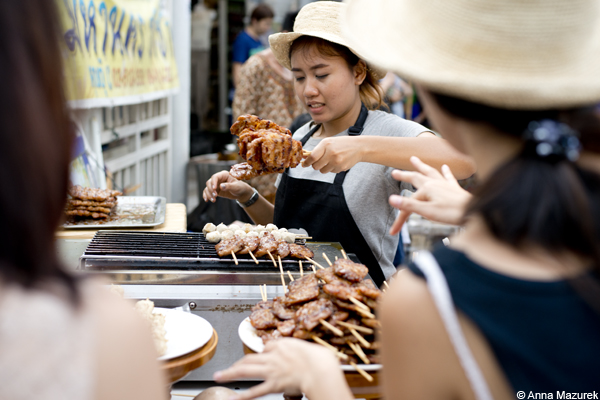
My favorite street food in Thailand are the chicken and pork skewers cooked with sweet coconut sauce. Only 30 cents each! For dinner, I’ll eat two of these and two bags of sticky rice. Grand total: $1
Skip the Soda
Drink water or fresh juice. It’s cheaper and healthier than a soda. Fresh squeezed juice is rough a $1/glass in Asia and Latin America.
Pack a Water Filter
Buy a water filter and filter you own instead of wasting money on plastic bottles, which are bad for the environment. I recommend Sawyer’s Mini Filter. It’s tiny, inexpensive and easy to use. I’ve been using it for the past four months in Central and South America. Also, invest in a good insulated reusable water bottle like Klean Kateen. Avoid anything that’s not BPA free or aluminum. Stainless is easy to clean and keeps beverages colder longer.
Both the water bottle and filter will save you a fortune in airports. In Mexico, bottled water was five times more expensive in the airport. I simply filtered the bathroom sink water.
Free Breakfast
Look for accommodation that includes free breakfast. Be sure to inquire about the type of free breakfast. I just emailed two hostels in Medellin, Colombia asking what they offer for breakfast. The one with the best breakfast gets my business. Check hostel reviews – if the breakfast is bad, it will be noted.

I love that you can buy eggs individually in street markets across the world. Morning market in Luang Prabang, Laos.
Cook
Most hostels have full kitchens. I cooked dinner every night for a week in Oaxaca, Mexico with some new friends from my hostel. We each spent $2/night on food at the local market. We had good quality and hearty meals filled with tons of local, fresh vegetables and even homemade tortillas from the street market. The best thing about traveling is that you can buy produce and eggs individually so it’s easy to buy exactly what you need!
Peanut Butter
Nothing will get you through long bus rides or early mornings like peanut butter. Food at train/bus stations is usually overpriced and horrible. It’s also notorious for food poisoning. Make a peanut butter sandwich for the road and treat yourself to a good dinner when you arrive. Buy a jar of natural peanut butter before you leave home at Trader Joes or Whole Foods for $3. (By natural, I mean unsalted and no artificial sweeteners.) Grab some local honey and bananas at the street market for a real treat. I’ll grab bread from a local bakery and make sandwiches on the train. Skip the ramen – it’s gross and bad for you.
Don’t Skimp on the Tip
Traveling on a budget isn’t an excuse to be cheap. Consider tipping in your budget when eating out. Guidebooks will give you a good idea of what is appropriate for local customs in restaurants versus taxis etc. Bartending and waiting tables funded a great deal of my travels. Tipping is heavily relied on for survival in many parts of the world especially when non-democratic governments are involved.
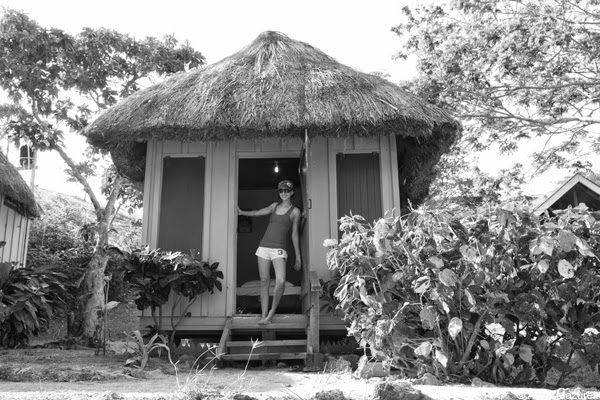
How To Save On Accommodation
Accommodation, food and transport are the top three expenses in life and travel. I will break them down in a three part series.
 I rented a basic tiki hut in Fiji in 2008.
I rented a basic tiki hut in Fiji in 2008.
Types of Budget Accommodation
When I lived in California, my roommate and I rented out the Ikea futon in our living room for $75/night and met some cool folks. I found a room for $35 in Albuquerque on a road trip last year and spilt a nice room in Burlington, Vermont with a friend in October for $70. All were great experiences and cost effective.
Costs can triple during holidays and high seasons. Book in advance. Be aware of national holidays in your destination country. It’s easier to negotiate prices in the low season, but the weather might not be ideal. Lonely Planet guides provide a good breakdown for seasons and holidays on their first few pages. Christmas, New Years and Easter are always peak seasons.
Despite whether you are paying online or in person, it’s almost always cheaper to pay in local currency. Currency conversion rates usually inflated for profit.
Get out of your comfort zone and go see the world!

Travel Funding: Top Saving Tips
Top 8 Saving Tips for Travel
1. Track Your Current Spending
2. Make a List of Monthly Bills
3. Cut Expenses
4. Sell everything
5. Minimalism
6. Make More Money
7. Debt
8.Set Weekly and Long-term Goals
READ NEXT:

Travel Funding: The Cost of Traveling
I quit my first “real” job as a graphic designer at a newspaper to move to Australia on a one-year work visa. One of the middle-aged copyeditors at the paper was baffled, “How are you going to live?,” he asked. “Do you have a trust fund?”
I shook my head and replied, “No. I saved and plan to work while I’m gone.”
Traveling is easier than you think and is probably cheaper than where you live now. The biggest myth about traveling is that it’s expensive. I am starting a series about Travel Funding including how to save for a trip and ways to cut costs on top expenses. My tips are geared toward long-term travel but can also be used to extend your funds for any trip! In life, you either have time or money. In this series, I focus on money. You can find my post on finding the time to travel here.

Zicatela Beach, Mexico
HOW MUCH DO I SAVE?
Top Five Factors to Consider when Saving for Travel
1. Research Your Destination
2. Be Aware of High/Low Seasons
3. Bucket List Activities
4. Talk to Other Travelers
5. Cushion Fund




